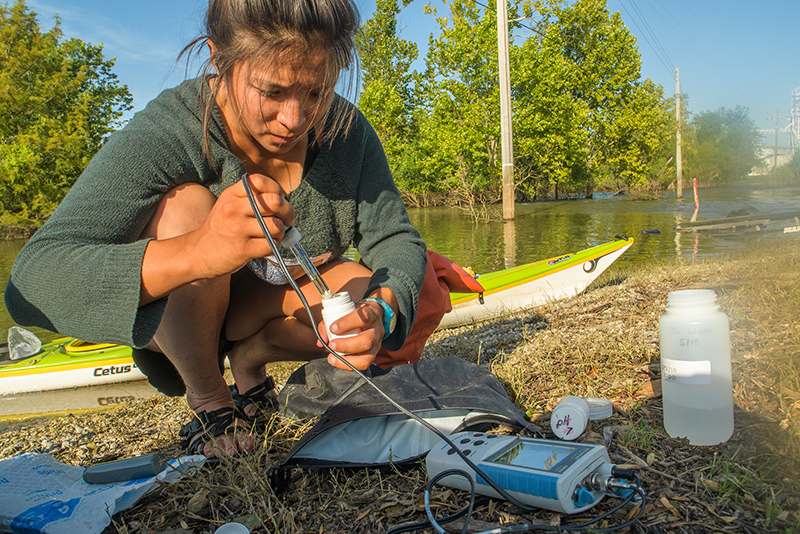When did the journey begin?
Maya Dizack and Michael McGuire take a moment to settle on an answer. Friends since eighth grade in Racine, Wisconsin, and fellow students in UVM’s Rubenstein School of Environment and Natural Resources, they teamed up on an ambitious Mississippi River project this summer. While Dizack paddled the river, monitoring water quality along the way, McGuire drove the land route as support and photo/video documentarian.
May 24 or May 25? Well, technically, on the 24th Dizack put her kayak in the narrow stream flowing from Lake Itasca, the mighty Mississippi’s meek origin. But her hull immediately cracked. So, a day and a drive to the boat repair shop in Bemidji later, the paddle south began, officially, on May 25.
This was adventure with a purpose, driven by concern over pervasive microplastics in the environment. Their trip happened to coincide with publication of a study published in Environmental Science and Technology indicating the average person ingests at least 50,000 particles of microplastics a year and inhales a similar quantity. (CNN estimated that’s equivalent to eating a credit card every week.) Dizack gathered water samples along the length of the river, as both students helped spread awareness via social media and in conversations with the people they met, partnering with the 1 Mississippi river advocacy group.
Field science is seldom simple; but Hurricane Barry and epic flooding added particular challenge. Dizack recalls a day when a super-cell storm churned up fast, black clouds turning purple, lightning bolts. The nearest dry land was the exposed rise of a broken levee; on the other side, miles of submerged cornfield. On that day and others, Dizack found her way to safety thanks to the help of strangers, “river angels” in paddler parlance. Looking back on the trip, she counts those human interactions among her best memories. “Those people are…” Dizack says, and McGuire finishes the sentence, “so kind.”
Though Dizack pulled her boat from the water on July 25 at the point where the Atchafalya River branches from the Mississippi, 150 miles north of New Orleans, this summer project continues. Freezers in the Aiken Center hold many one-liter bottles of Mississippi River water to analyze for microplastics, and McGuire’s laptop holds hours and hours of video to be edited into the story of a summer of work on and for America’s iconic river.



Source: UVM News

